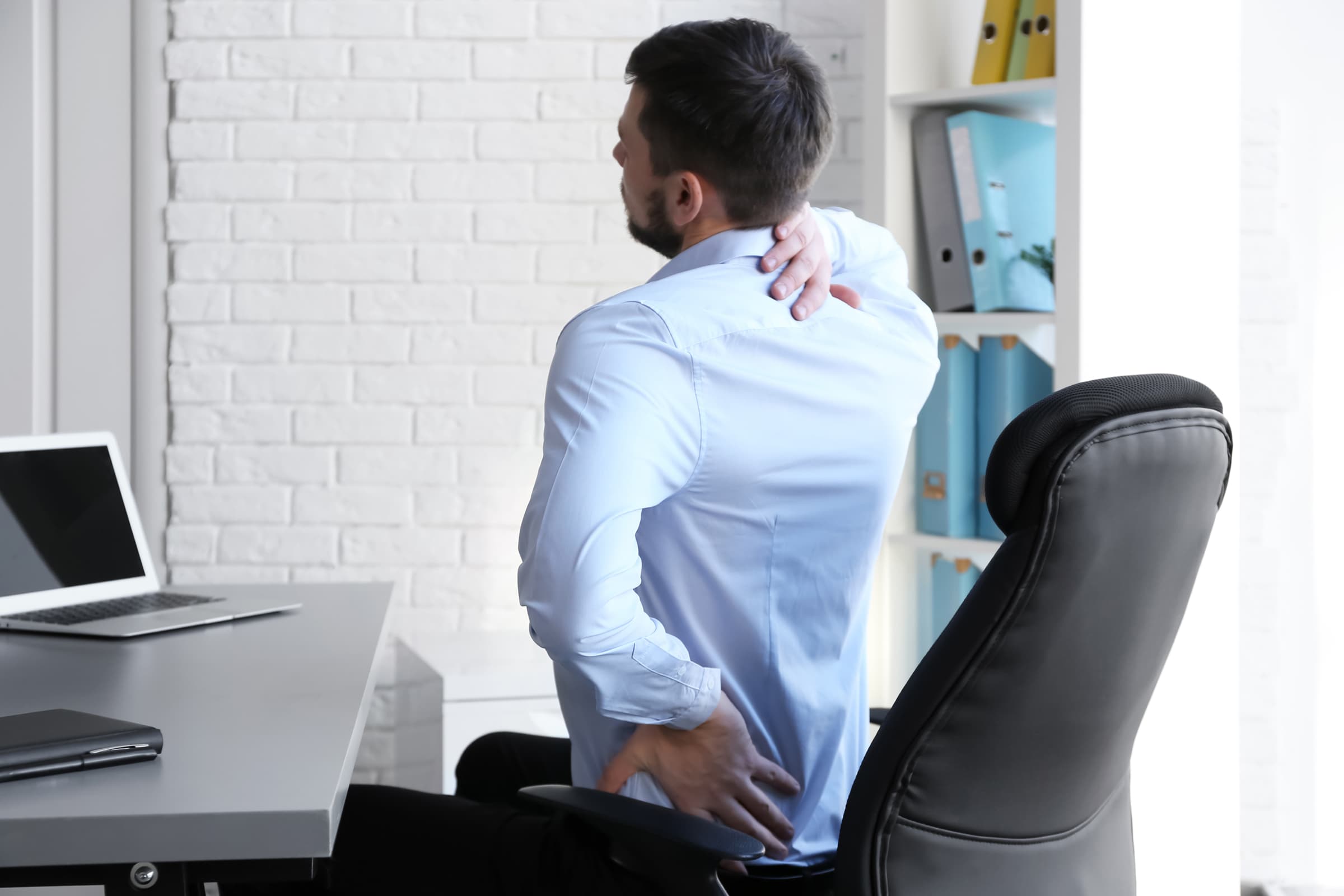Why do office chairs have so many parts?
People searching for the “best ergonomic office chair” are nonplussed when they land on our website and see a chair that's missing most of its "key" parts. But it turns out that in chairs as in so many other things, sometimes less is more – in this case less chair parts is more movement. Why are chair backs, armrests, and lumbar support not only unnecessary, but often causing people pain and discomfort? Well, here's the scoop:
Why no backrest?
Our active chairs don’t have a backrest because you don’t need one. For most of time, humans have sat comfortably without backrests, and you can, too. Counterintuitively, backrests actually invite poor posture and weaken core muscles, problems that in concert often lead to back pain and in the longer term sitting disease.By contrast, our chair encourages your spine to express its naturally perfect posture without trying to match the expectations of a chair that likely doesn’t fit your unique body very well. Although ergonomists have solemnly pronounced that it is impossible to sit all day without a backrest, we have thousands of customers around the world (some of them octogenarians!) who sit on our chairs all day, every day, and are delighted with the results. We’re pretty sure you will be too.
Why no lumbar support?
Our chairs don’t have lumbar support because you don’t need it. Lumbar support is added to conventional office chairs to “correct” the rounded back that is anatomically unavoidable result of forcing people to sit with their hips at an apparent 90-degree angle. Unfortunately, the human hip only flexes to around 60 degrees, so to accommodate the 90-degree requirement people must round their backs, a concession to their chair is unnatural and uncomfortable. To correct the problem “ergonomic” office chairs add lumbar support, a solution that only compounds the fundamental problem of sitting with one’s hips at 90 degrees. By contrast, our chairs encourage people to sit higher, establishing an open hip angle. This encourages the lumbar curve to reassert itself naturally, and allows you to sit with excellent posture; no lumbar support required. The addition of lumbar support to standard office chairs would cause a lot of mischief, but fortunately almost on one actually uses the lumbar support which has become an expected, but irrelevant, part of every office chair. Bottom line: because you don’t need lumbar support we don’t waste your money building one into your chair.
To correct the problem “ergonomic” office chairs add lumbar support, a solution that only compounds the fundamental problem of sitting with one’s hips at 90 degrees.
Dr. Turner Osler
Why no armrests?
Armrests are unnecessary, because with your arms hanging comfortably from your shoulders and your wrists resting comfortably on your desk no further support is required. Moreover, armrests can actually cause mischief, by distorting posture and over time, even occasionally damaging the ulnar nerve. So, armrests add problems rather than value. The real question is why are armrests so common in the world of office furniture?
Why does it move?
Very simply, humans need to move to remain healthy and vital, and we believe their chairs should support this need. Sitting still is profoundly unnatural, and causes a panoply of problems. Sitting for long periods of time increases the risk of heart disease, diabetes, obesity, and even cancer. Indeed, epidemiologists estimate office chairs shorten our lives by as much as 2 years.. And because sitting itself is the risk factor, exercising daily at the gym cannot undo the harm caused by prolonged passive sitting. Additionally, the various supports of traditional office chairs lock us into a single position resulting in poor posture, and a weakened core, often leading to bouts of back pain which may eventually become a chronic condition. By requiring subtle, continuous, rebalancing active sitting improves posture and strengthens one’s core musculature. So, if you must sit, sitting actively is quite simply the healthiest way to sit.
Why two sizes of chairs?
The short answer is: because people come in a range of sizes, and we want our chairs to fit people well. But the real question is: Why do all other office chairs come in only one size?
Because people come in such a range of sizes, chairs have to provide a seat height that ranges from 17” off the ground for petite people to 27” for basketball players. So, a range of about 12”. But no single gas cylinder can cover this range.because of its elegantly simple internal workings, physics doesn’t permit a gas cylinder to double its length.
Long story short, we decided we would need to sell our chairs in two sizes, so we could cover the range of sizes that humans come in.
After we implemented this approach, we came to understand why every other chair company made do with selling one size of chair. While making two different sizes of a chair was easy (just use a tall or a short gas cylinder), explaining to people how to pick the right size of chair, and handling the inevitable exchanges required when the initial size wasn’t right, turned out to take a bit of effort. Eventually we found that a short video that explains chair sizes eliminated most of the confusion caused by our “two sizes of chairs” approach:
https://youtu.be/uonxhz3CdSA?t=3
Will other office chair companies follow our example? Not yet. But it often happens that innovation comes from small startup without the baggage that comes with a long history in the business. Eventually “Big Chair” will come around. But in the meantime, if you’re looking for a chair that fits you, we’re your company.





Leave a comment
All comments are moderated before being published.
This site is protected by hCaptcha and the hCaptcha Privacy Policy and Terms of Service apply.